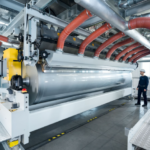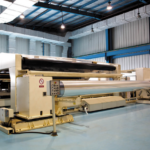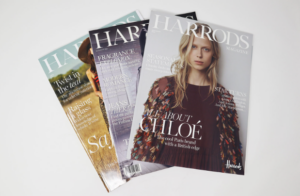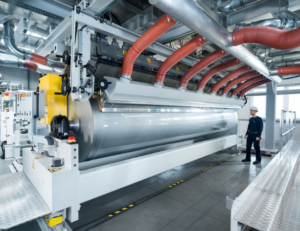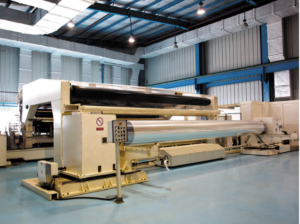Nylon film, commonly known as polyamide, is a molecular chain with amide group (- CONH -) repeat structure unit of the polymer, as a fiber known as nylon in China. Polyamide is known as polyamide, or PA for short, and Biaxially oriented polyamide (nylon) film, or Bopa for short. PA6 and PA66 are commonly used in the production of films. Because PA66 crystallizes too quickly and is difficult to process, PA6 is usually used.
Nylon films are synthetic thermoplastics with exceptionally high tensile strength, minimum tissue reactivity, and a high degree of flexibility. Polyamides are considered some of the most potent synthetic textile materials with excellent durability and low cost. This is why nylon films have unmatched oxygen barrier properties, making them perfect for cooking applications and packaging materials.
Unlike other resins, nylon films are easy to process. They are often used in combination with polyolefins to create a multilayered structure of the film. They also have a high melting point, so they perform well at extremes of temperature.
Advantages of Nylon Films
- The most significant advantage of nylon films is their flexibility and toughness.
- They are environment-friendly and can be recycled without polluting the environment with harmful chemicals.
- They come out as a relatively affordable range of synthetic materials out there.
- Nylon films are impermeable to oxygen. When used for food packaging, this property prevents air entrapment and does not balloon the packaging.
- Nylon film acts as a perfect barrier to chemicals and aromatic substances.
- These films are easy to recycle and microwave.
Types of Nylon Films
One of the critical components of nylon processing is orientation. Orientation processes help transform plastic resins into durable nylon packaging films.
Based on the film orientation process used in their manufacturing, nylon films are classified into three main types:
- Cast or Unoriented Nylon Film
- Multi-layer Co-extruded Nylon Film
- Biaxially Oriented PA film or BOPA
What is BOPA Film?
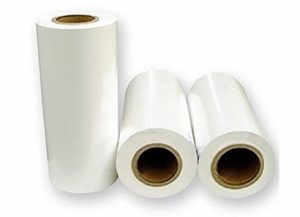
Picture 1 Bopa Film
BOPA film or Biaxially Oriented Polyamide film is a type of nylon film processed through a method known as biaxial orientation. It is also known as BON or Biaxially Oriented Nylon film. The words biaxial orientation refer to a method in which the nylon film is stretched in a unique way that changes the orientation of its polymeric chains. As a result, the orientation of the films becomes parallel to the plane of the film. These changes impart exceptional clarity to BOPA films, enhancing their flexibility and tensile properties.
BOPA films are known for providing the best oxygen barrier. In fact, the film’s oxygen barrier is 30% higher compared to its non-oriented counterparts. Furthermore, since BOPA film limits oxygen permeation and is shrinkable, it is ideal for food packaging.
The chemical composition of BOPA film constitutes an amide group known for having solid intermolecular adhesion due to hydrogen bonds. Therefore, most BOPA film advantages are attributed to these strong molecular forces.
BOPA Film Advantages
The main advantages attribute to the distinct BOPA film properties. These include:
- Very high mechanical strength imparts these films exceptional toughness and makes them super stiff
- High mechanical strength
- Excellent flexibility and tensile strength
- High melting point leading to high heat resistance
- Low elongation makes them challenging to stretch and break
- High puncture-resistance
- Notable thermoformability
- Very good printability
- Transparency
- Aesthetically pleasing, glossy finish
In contrast to standard nylon film, BOPA film does not deform under load due to its elastic properties. Due to these properties, BOPA films are considered one of the most sought-after specialty films and used as a flexible packaging solution for foods that are sensitive to oxygen.
Types of BOPA Films
Based on the structure, BOPA films are classified into two main types:
- Specialty Films
- Plain Films
The main difference between these two variants is the number of layers in each type. For example, specialty films are made with multiple polymer layers that range between two to seven.
On the basis of appearance, BOPA films are grouped into:
- Transparent Films
- Metalized Films
Transparent Films
Most modern packaging materials for perishable goods use transparent films. They are clear and neat and package materials like foods, vegetables, electronic appliances, medical and pharmaceutical products really well.
Metalized Films
Metalized films are BOPA films that have been treated with a process called vacuum deposition. In this process, a thin layer of aluminum metal is deposited on the film’s surface. Metalized films make a perfect alternative to aluminum foils and CPP films. They are widely used in food packaging.
How are BOPA Films Manufactured?
The manufacturing process of BOPA films encompasses the biaxial orientation of nylon film, meaning the nylon films are literally stretched in two different directions to impart strength and toughness. The two popular methods used to manufacture BOPA films are Blown Film Process, Tubular Process, Double Bubble Process, Cast Film Process, or Tenter Frame Process.
Both the Double Bubble Method and Tenter Frame Process have their own advantages and disadvantages. What sets the Double Bubble Method apart from the latter is how it produces a uniquely balanced film structure. The orientation directions of films produced by the double bubble method are similar as they are stretched in all directions at a time. On the other hand, the Tenter Frame Process does not always yield a similar orientation.
The main downside of double bubble method is the technical challenges that make it difficult to control process parameters during manufacturing. Controlling and maintaining temperature is one of the critical parameters of the double bubble process. Failure to control these parameters can affect the quality and uniformity of BOPA film. The film’s thickness is almost always consistent with little to no variations in the tenter frame process. Another setback of the double bubble process is the low output rate as compared to the tenter frame process.
Still, the Double Bubble Method is the go-to method used in BOPA film manufacturing. In contrast, Tenter Frame Process is more commonly used in manufacturing other different types of films, such as BOPP and BOPET film.
Double Bubble Method
Following are the key steps BOPA film manufacturers use in the production of BOPA:
Step1: Extrusion
In this step, the nylon polymer is extruded vertically as a thick-walled tube into a water bath. The extrusion process works in either downwards or upwards direction. As a result, the water from the water bath rapidly cools down the polymer (a process called quenching), which lowers its crystallinity. The lowered crystallinity in the extrusion process prepares the film for a uniformly similar orientation in both directions.
Step 2: Reheating of the primary film
The film is then reheated in a reheating tunnel which can be a hot water bath or IR heater. Temperature control at this point is one of the most critical aspects of the entire process. The primary film is heated such that its temperature rises above the softening point while staying below the melting point. Once the orientation temperature is attained, the film is then stretched uniformly in all directions.
Quenching and reheating in this way help control the orientation of the primary film by maintaining a uniform temperature for orientation throughout the process.
Step 3: Stretching the film
The primary film is then expanded at low temperature, which improves its orientation further.
Step4: Thermofixation or Annealing of the film
In this step, the polymer tube is reheated to achieve the annealing of the film. This process is known as thermalization as it imparts stability and flexibility to the film.
Post-processing with surface treatments
Polyamides have a high affinity for water as they absorb water quickly. As soon as the nylon films are annealed and exit through the extruder, they start taking in oxygen from the atmosphere. This process lowers the glass transition temperature of these polymers. Therefore, conditioning the biaxially oriented nylon films with water improves their flexibility, permeation, strength, and puncture resistance. It is therefore essential to condition BOPA film with in-line humidification. The process is time-consuming as it requires sufficient equilibration of the BOPA plastic with air humidity.
BOPA Film Applications
BOPA films are widely used in the food packaging industry, thanks to their oxygen and smell resisting properties. Some common processed foods that are packaged with BOPA films include:
- Meat
- Sausages
- Bacon
- Smoked fish
- Cereals
- Cheese and other dairy products
- High done microwaveable meals
- Frozen foods and vegetables
- Agricultural products
- Aquatic products
For frozen food packaging, Bopa film mainly uses the characteristics of high strength, puncture resistance, good cold resistance.
For liquid seasoning packaging of noodle soup, it mainly uses PA6 material with high strength, good puncture resistance and special oil resistance, while nylon 66 material is used when high temperature is required.
For steaming food packaging, the main use of its oil resistance, heat resistance, the gas barrier is good, with puncture resistance and other characteristics.
In addition, Bopa film is also widely used in medical, pharmaceutical goods, cosmetics and machinery, electronics and other general industrial packaging fields.
Tips on the usage of Bopa Film

Image Courtesy: Wood Mackenzie
1, As we know, Bopa is easily hygroscopic, its barrier property will decrease significantly after hygroscopicity. Serious quality accidents will occur if we ignore the influence of humidity.
2, Due to the hygroscopicity of the film, a layer of fine water-bead net film is formed on the surface, which blocks the adhesion of the ink, and causes the quality problems such as small bubbles or white spots.
Hygroscopicity BOPA material deformation will lead to printing wrinkle, misregister, bag misalignment, warping, crimp, composite film bubble, easy spots, crystal spots and white spots. Increased odor, membrane surface adhesion, coding difficulties, and so on.
In severe cases, the composite peel strength decreases, or the ink or adhesive transfer occurs. The delamination occurs, coding speed decreases or the coding process can not hit the high-temperature cooking bag phenomenon increases, composite film hand feeling hard, brittle phenomenon increase, etc. It seriously impedes the production process and quality of products. It causes difficulties and losses to the manufacturers.
Suggestions on Bopa Film when it is used in the printing process
1) Strictly control the temperature and humidity of the production environment.
There will be a series of bad quality consequences caused by the hygroscopicity of Nylon. It is very important to the use and storage environment of nylon film. It should be stored at 23°C ± 3°C, and the relative humidity of the production environment should not exceed 60%.
2) Use minimal or no alcohol solvents.
Printing nylon film requires own special polyurethane resin ink, in the use of polyurethane resin ink to pay attention to less or no alcohol dilution solvent.
If it is necessary to add alcohol dilution solvent, try to control within 8%, and reduce to a minimum residual solvent (general total amount > 3 mg/m2) in the printing process. It is best to add a small amount of white ink curing agent to improve the composite fastness when printing with a white ink backing
3) Control the quality of solvent
It is necessary to control the amount of water and alcohol in the solvent usage. The quality of various solvents is very important, such as the water content, alcohol content of ethyl acetate can ultimately affect the quality of dry composite products.
4) Pay attention to curing
It is extremely important for the curing of half-finished printed films. If the adhesive is fully cross-linked, the molecular alignment can improve the fastness of the composite. On the other hand, the residual solvent in the semi-finished composite membrane can be discharged to reduce the residual solvent, thus reducing poor peel strength, poor opening, odor, and so on.
Trending of Bopa Films in Future
1, Control costs, expand capacity reasonably.
2, The quality aspect has the better promotion, for example, enhances the intensity, reduces the fog, enhances the barrier, the thickness tolerance reduction, enhances the shallow screen printing performance and so on;
3, Take the differential development route: the differential product research and development and the market promotion like high barrier product, the straight-line easy to tear the product, the anti-cooking product, the degradable product and so on.
Conclusion
The versatile properties of BOPA films make them an excellent alternative to other films. They are tough and resilient yet flexible enough to package products effortlessly. More so, the oxygen barrier properties of BOPA films make them suitable for packaging foods that can go bad in the presence of oxygen. Furthermore, The manufacturing process of BOPA films is challenging than that of others, making these films costly than other typical films.


